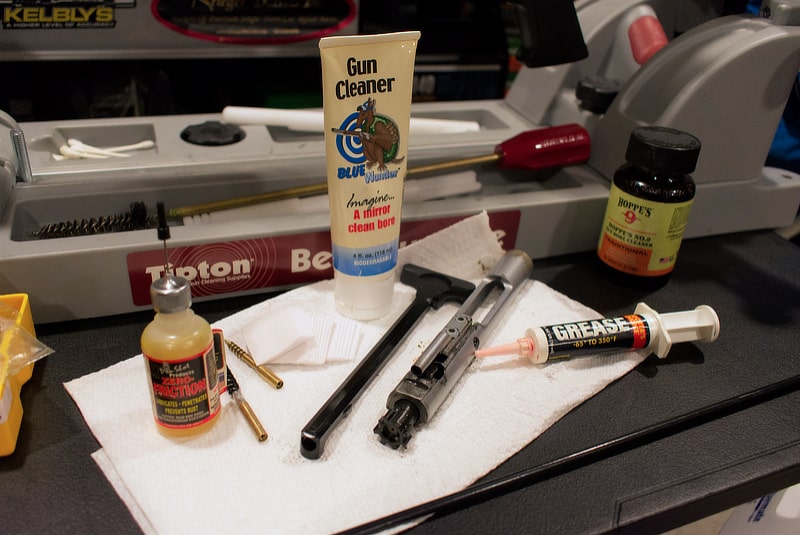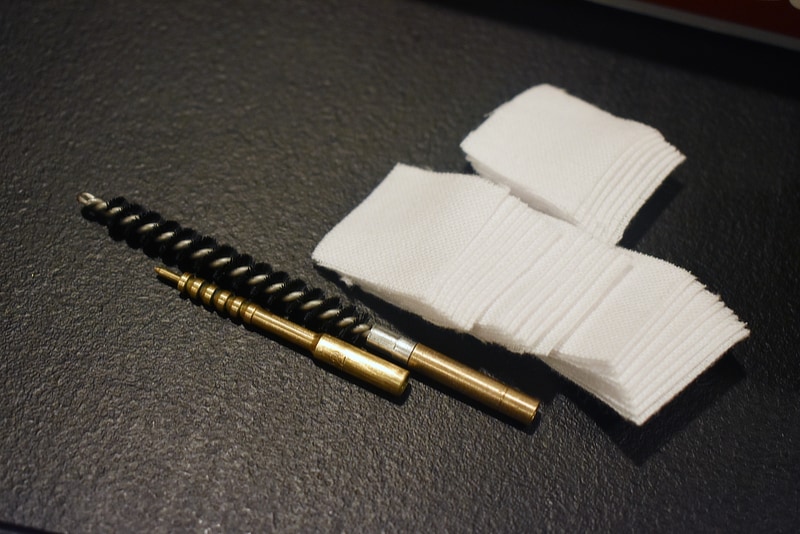Gun Cleaning: Five Things You're Doing Wrong
Cleaning is largely a personal preference. Some have their favorite concoction or the only thing they’ll ever let touch their gun. Others don’t care. I’ve seen WD-40 used exclusively as well as near rusted out cans of window cleaner. Gun cleaning is also one of those things people will argue for hours over. Here are five things you might be doing wrong when it comes to cleaning.
1. Pretending You Know Everything
No one knows everything. There are some people who come pretty close, but traditionally it’s the ignorant who aspire to educate. On the first day of my NRA Rifle Instructor course, a man—we’ll call him Bob—walked in holding an .300 Blackout AR. He was nice enough, but was quick to mention he’d built the gun himself and proceeded to gush over how wonderful it was. When we reached the cleaning portion of the class, the instructor decided to use Bob’s rifle as an example. Since Bob was so sure of his equipment, the instructor asked him to field strip and demonstrate rifle cleaning.
Instructor: “How dirty is your rifle?”
Bob: “Oh, it’s clean.”
The instructor met Bob’s response with a dubious look. I watched as Bob struggled for a minute, then started giving him instructions. “Remove the rear pin, then slide the charging handle and bolt carrier group out.” As I proceeded to instruct him in disassembling the BCG, I quickly noticed the carbon coating Bob’s hands. The instructor and I exchanging knowing looks. I was dismissed to eat my lunch and watch the rest of the festivities. It took several patches and some scrubbing to effectively “clean” Bob’s “just barely dirty” rifle, plus some instruction from a 21-year-old girl.
2. Cleaning Too Often
Wait—isn’t it bad to leave a gun dirty? Yes and no. This largely comes down to knowing your firearm. With rifles, ultimate accuracy can come with fouling. In some matches, competitors will purposely fire rounds into the ground or into a practice target just to dirty a clean barrel. Others won’t clean their firearms before a big match. I fall into this second category. As a general rule, clean your firearm before storing it for a significant length of time and often enough so carbon and build-up won’t negatively affect performance and functionality.
3. Forgetting Oil/Lube
Imagine nails on a chalkboard. Ten bucks says you’re cringing. A bone-dry firearm should elicit the same reaction. Some guns like oil more than others, but friction shouldn’t be the overbearing factor (pun intended). Actions should run smoothly.
4. Using Just One Patch
One patch is not enough. Whether you are cleaning a rifle, pistol, or shotgun, it will take several wet and dry patches to properly clean a firearm, even if there are just a few shots through it. Don’t be afraid to repeat several cycles. The type of cleaner and jags/brushes you use can impact the number you need.
5. Assuming a Dirty Gun is Never the Problem
Even if you keep your gun meticulously clean, carbon rings happen, things get gummed up, debris accumulates. If pressure increases, your group size increases, or your gun starts malfunctioning, your first reaction (after ensuring the gun is safe) should be to clean the gun and check for deformities and build-up. A borescope is especially helpful for evaluating hard to reach areas in long guns.
These are only a few of the nearly innumerable things people tend to mess up. Regardless of experience, we all get lazy sometimes. Others just don’t know. Take time to protect your investments and ensure that no matter the use, your guns are in good, working order.




